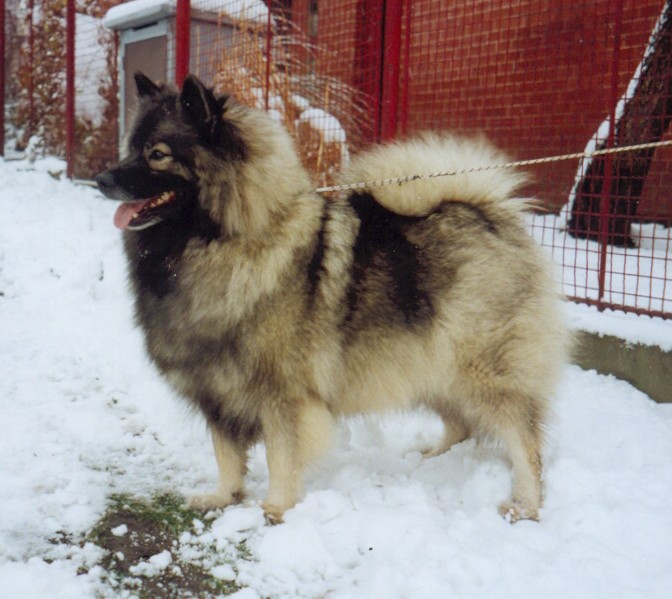The Keeshond was bred to be a companion and watchdog and as such, make perfect family dogs. Great with children, the elderly, other dogs and everyone in between, this breed even has a signature smile that delights dog lovers lucky enough to meet one! A nickname for the breed is “the smiling Dutchman”. Kees do great in agility, obedience and other performance events if trained for the task but are also happy to just spend time with their owner or family at home.
Because he is quite intelligent, the Keesond should be given obedience training while he is still a puppy. Otherwise, he may end up maturing and turning into a master manipulator! Teaching him not to jump is usually a given, as most want to be as close to people as possible – including guests. As Kees can be extremely happy-go-lucky, they may not take super-mild corrections seriously. This is not to say one should be harsh with this breed, but rather to interact with each dog as an individual – being aware of his own unique personality and what works vs. doesn’t work. It’s also good to remember that Keesonden (the plural of Keeshond) can get bored with repetition pretty easily and therefore need new challenging routines every day. Despite all this, the breed is very eager to please and can take extremely well to training! Despite an occasionally stubborn nature, he can actually turn into a great obedience dog.
The Kees has a double coat and requires roughly 30 minutes a week of brushing to keep him in tip-top shape. Baths should be given roughly once a month. Most owners confide that the breed doesn’t have a doggy odor and the coat will shed dirt and mud when it dries, so he is generally good for owners that don’t like muddy dogs but can deal with the occasional “hair tumbleweeds” around the house (they shed moderately – and twice a year will shed a lot). As this is a small to medium-sized breed, grooming shouldn’t be too overwhelming, but keep in mind that what these spitz dogs lack in size, they make up for in quantity of coat! And remember – like most double coated breeds, the coat acts as insulation so you should never shave it in the summer!
The Keeshond doesn’t need a big yard, although it doesn’t hurt to have one. As youngsters, they are very active and will use your living room as a playground and obstacle course unless given enough outdoor exercise. Water bowls are usually really fun – puppies tend to splash the water out of the bowls with their feet (although most dogs outgrow this). Life with a Keeshond has been said to “never be dull”. It is vital, then, that they be given daily exercise to keep their bodies and minds occupied. They don’t require a ton of exercise although they are able to keep up on long hikes if they need to. This makes them fairly adaptable to many different situations. They especially like cold weather, but don’t require it. 
As he is extremely people-oriented, only those who want to really share their home with their dog should consider a Kees. He should not be tied up in the yard all day, or otherwise left to fend for himself. Members of the breed which have been delegated to outside-only dogs, or “home alone dogs” often end up as problem barkers which not only can annoy neighbors, but psychologically harm the dog. Affectionate breeds such as this friendly spitz do best when they are able to interact with their family throughout the day. A lonely Keeshond is a bored Keeshond which can end up becoming a frustrating-to-live-with Keeshond….
Because they were bred to be watchdogs (particularly on barges that traveled Holland in the 17th and 18th centuries), Kees will announce visitors whenever one comes to the door. Some are noisier than others and will announce every sound that they hear. Because the breed is very curious, they want to inspect (and often alert to) every new sound, sight and smell. So while they can do very well in some apartment situations, they may need extra training and/or attention if living in an apartment with lots of foot traffic.
Most Keeshonds love traveling in the car and are very excited to go on any trip that their owner might be heading on. They also love food, companionship and returned affection. All in all, they make great friends who are easy to afford and easy to care for! Just remember that they are a 13-15 year commitment. Don’t get a puppy on impulse. Remember that although they are easy to care for in some ways, they have other traits that also make them difficult – for example, the Kees can be a digger, whether it be a flowerbed or just the normal yard. Young puppies and adolescents can also be chewers.



